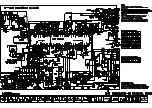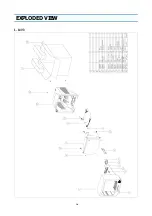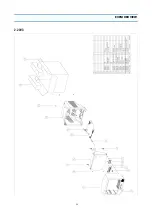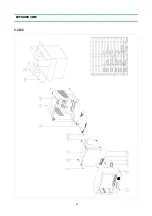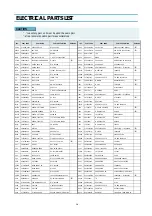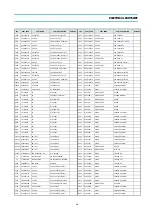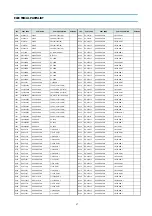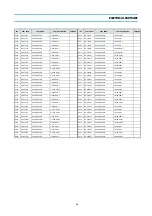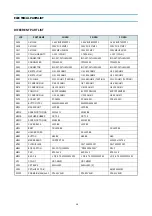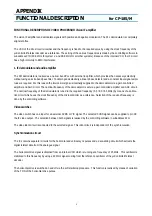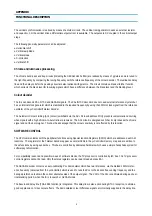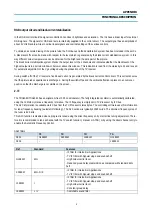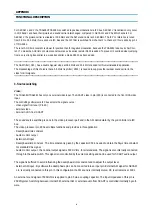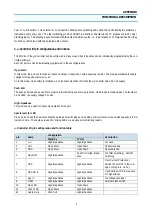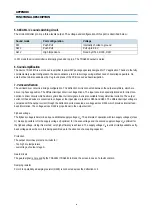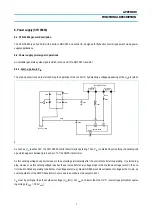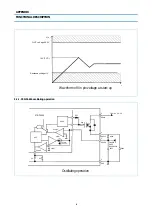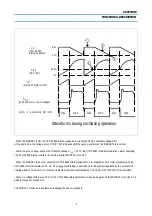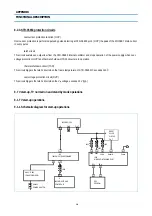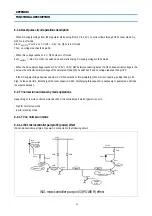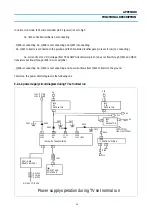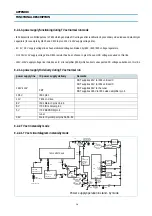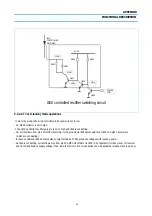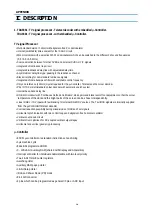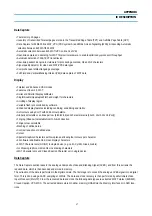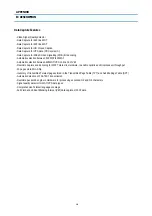
3
RGB output circuit and black-current stabilisation
In the RGB control circuit the signal is controlled on contrast, brightness and saturation. The ICs have a linear input for external
RGB signals. The signals for OSD and text are internally supplied to the control circuit. The output signal has an amplitude of
about 2 Volts black-to-white at nominal input signals and nominal settings of the various controls.
To obtain an accurate biasing of the picture tube the 'Continuous Cathode Calibration’ system has been included in these ICs.
A black level off set can be made with respect to the level which is generated by the black current stabilisation system. In this
way different colour temperatures can be obtained for the bright and the dark part of the picture.
The black current stabilisation system checks the output level of the 3 channels and indicates whether the black level of the
highest output is in a certain window or below or above this window. This indication is read from the status byte 01 and is used
for automatic adjustment of the Vg2
voltage during the production of the TV receiver.
During switch-off of the TV receiver a fixed beam current is generated by the black current control circuit. This current ensures
that the picture tube capacitance is discharged. During the switch-off period the vertical deflection is placed in an overscan
position so that the discharge is not visible on the screen.
2. IF
The TDA9361/TDA9381 has an alignment free IF PLL demodulator. The fully integrated oscillator is automatically calibrated,
using the 12 MHz crystal as a frequency reference. The IF frequency is simply set in TV-Processor by I2C bus.
The AFC information is available via I2C bus from the TV-Processor status bytes. The controlling software uses this information
for tuner frequency tracking ( automatic following ). The AFC window is typically 125Khz wide. The minimum frequency step of
the tuner is 62.5 kHz.
This AFC function is disabled when a program is tuned using the direct frequency entry or after fine tuning adjustment. There-
fore it is recommended to tune a channel with the TV search function ( manual or ATSS ) or by using the direct channel entry to
enable the Automatic Frequency Control.
SAW filters
TF
TK
TU
TA
SF01 G1984M K2960M J1981M G1984M
SF02 - - - L9653M
Ref.
Standard
Features
G1984M B/G
- IF filter for Intercarrier Applications
- TV IF filter with Nyquist slope and sound shelf.
- High colour carrier level
- Reduced group delay predistortion as compared with standard B/G,
half
K2960M B/G - D/K
- IF filter for Intercarrier Applications
- TV IF filter with Nyquist slope and sound shelf.
J1981M I
- IF filter for Intercarrier Applications
- TV IF filter with Nyquist slope and sound shelf.
- High colour carrier level
- Constant group delay
L9653M L / L’
- Switchable sound filter
APPENDIX
FUNCTIONAL DESCRIPTION
Содержание DTA-14V1
Страница 26: ...6 CIRCUIT BLOCK DIAGRAM...
Страница 29: ......
Страница 30: ...10 EXPLODED VIEW 1 14V3...
Страница 31: ...11 EXPLODED VIEW 2 20V3...
Страница 32: ...12 EXPLODED VIEW 3 21V3...
Страница 33: ...13 PRINTED CIRCUIT BOARD CIRCUIT DIAGRAM 6 SERVO SYSCON CEC CIRCUIT DIAGRAM T DECK...
Страница 59: ...19 IC DESCRIPTION APPENDIX...
Страница 62: ...22 APPENDIX IC DESCRIPTION...

